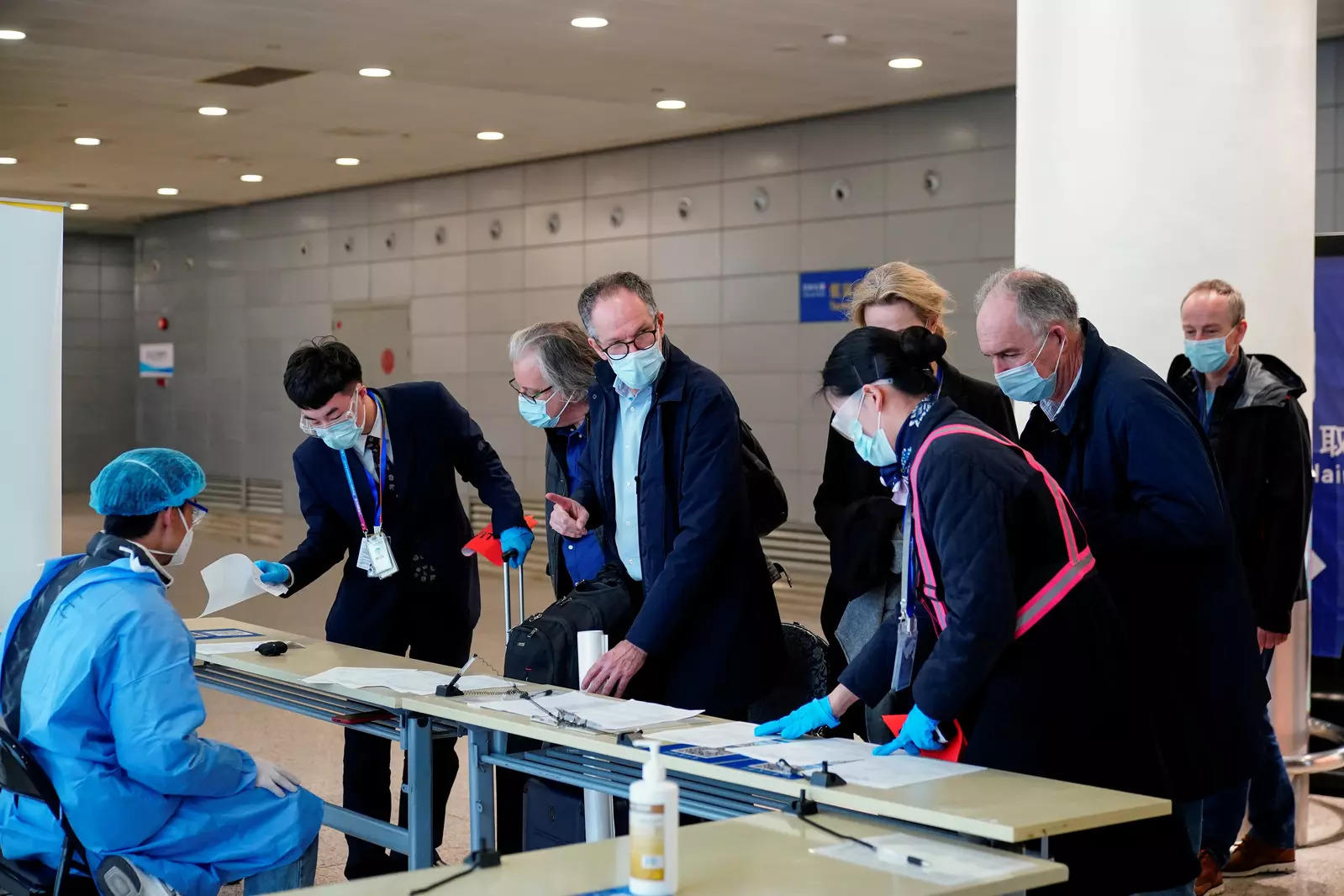
The WHO chief who released the long-awaited report on the origins of the SARS-CoV-2 virus cited difficulties in accessing the raw data and called for a more in-depth investigation into Covid-19, as the current assessment has not yet been extensive enough.
“In my discussions with the team, they expressed the difficulties they encountered in accessing the raw data,” Tedros said.
“I hope that future collaborative studies will include more timely and comprehensive data sharing,” he said.
In his closing remarks, Tedros said: “Let me state clearly that, as far as WHO is concerned, all hypotheses remain on the table. This report is a very important beginning, but it is not the end.”
The report, compiled by international experts appointed by the WHO and their Chinese counterparts, did not draw firm conclusions, but did rank a number of hypotheses according to how likely they were to think they were.
Key findings from the WHO report on the origins of Sars-Cov-2:
Laboratory leak theory
The WHO team visited several laboratories in Wuhan to consider the possibility of the virus entering the human population as a result of a laboratory incident, the report said.
Although the team concluded that a laboratory leak was the least likely hypothesis for the virus that causes Covid-19, the WHO said, the matter requires further investigation, potentially with additional missions.
“I don’t think this evaluation was comprehensive enough,” Tedros said. “More data and studies will be needed to reach stronger conclusions.”

The WHO team had arrived in Wuhan, China to investigate the origins of Sars-CoV-2 in January 2021.
Source of contamination in Wuhan market not tracked
The report has confirmed that there was widespread SARS-CoV-2 contamination in the Huanan market in Wuhan, but was unable to determine the source of this contamination.
Tedros recommended a full analysis of the trade in animals and products in the Wuhan markets, particularly those related to early human cases.
The report is not conclusive on whether the outbreak started at a Wuhan seafood market that had one of the first clusters of human cases in December 2019.
The market was one of the first suspects because some stalls were selling a variety of unusual animals, and some wondered if they had brought the new virus to Wuhan.
The report noted that animal products were sold on the market, from bamboo rats to deer, often frozen, just like live crocodiles.
The virus could come from farms, not markets
The WHO report addressed the possibility that the virus has entered humans through the food chain.
Tedros said further studies will be important to identify what role wild farm animals might have played in introducing the virus to markets in Wuhan and beyond.
The report further suggests that animals on cattle farms in Southeast Asia could be “linked to early human cases” and that more studies are needed on these farms.
Transmission from bats to humans: most likely
Researchers have listed four scenarios in order of probability of appearance of the new coronavirus. Topping the list was the transmission of bats through another animal, which they said was highly likely.
They assessed direct spread from bats to humans as likely and said spread to humans from “cold chain” food packaging was possible but not likely.
While it is possible that an infected animal contaminated the packaging and was brought to Wuhan, which later infected humans, the report says the probability is very low.
The report said very similar viruses (to Sars-CoV-2) have been found in pangolins, a scaly anteater prized in traditional Chinese medicine, but scientists have yet to identify the same coronavirus in animals that has been infecting pangolins. the humans.
About the WHO report
In July 2020, the WHO sent a small team to China to plan a joint study that included Chinese and independent international scientists.
It was agreed that WHO would select the international scientists. The terms of reference for the ‘Study of the origins of the virus’ were completed in the fall of 2020.
The team of scientists came from all over the world: Australia, China, Denmark, Germany, Japan, Kenya, the Netherlands, Qatar, the Russian Federation, the United Kingdom, the United States of America and Vietnam.
The joint international team consisted of 17 Chinese and 17 international experts from 10 other countries, as well as the World Organization for Animal Health (OIE); and who.
The WHO-led team spent four weeks in and around Wuhan in January and February 2021 before releasing its final report to the public today.
(With inputs from agencies)
.